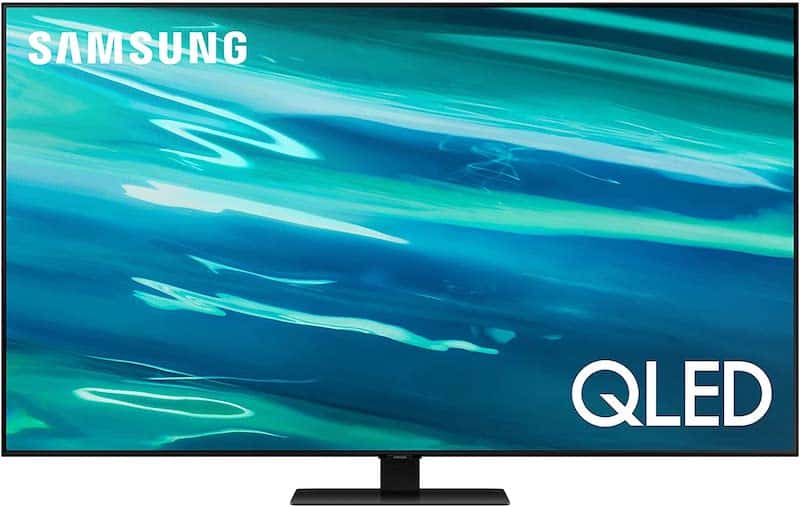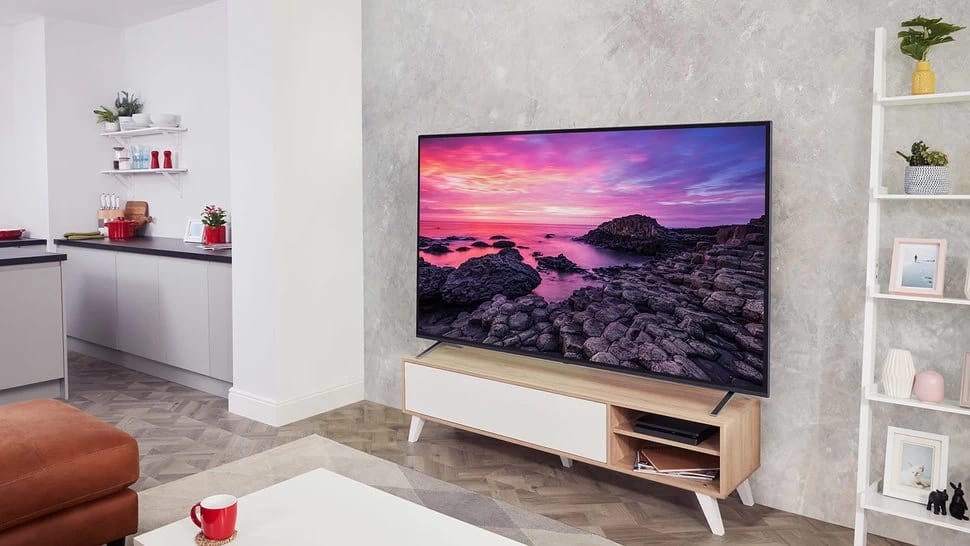There’s no denying that the TV industry has made some tremendous advancements in the past decade.
Better contrast, color vibrancy, deeper black levels, wider viewing angles – it seems that all of these things have been steadily improving with new TV generations. At the heart of this innovation stands new panel technologies like OLED, QLED, and NanoCell. With OLED being the more innovative (and more expensive) technology, it’s left to QLED and NanoCell to battle it out in the mid to high range category.
Keep reading our NanoCell vs QLED comparison and discover the differences between these competing technologies.
NanoCell vs QLED – The basics
QLED (Quantum Light-Emitting Diode) is an upgrade over the existing LCD technology that uses a quantum dot color filter in front of a standard LCD backlight to produce a higher quality image.
We’ll get into the specifics about how this technology works but, for now, it’s enough to say that QLED has introduced a valuable innovation in the LCD TV space.
The leading manufacturer and distributor of QLED technology is Samsung. Although Sony initially developed the technology, Samsung’s branding and marketing efforts put it on the map and in people’s homes. Brands like TCL, Vizio, and Hisense all make QLED TVs as well.
QLED Pros
- A deeper, more defined black levels
- Vibrant colors and great contrast
- A wide variety of models and dimensions
- More established and tested technology
QLED Cons
- Generally more expensive than NanoCell
- Diminished viewing angles
NanoCell panel technology is essentially going for the same thing as QLED: enhancing the existing LED technology with particles layered in front of the LCD backlight.
How NanoCell achieves this is slightly different, though. This technology uses an IPS (In-Plane Switching) panel in which the crystals are aligned parallel to allow for better viewing angles and contrast than your standard LCD TV.
NanoCell is the signature invention of LG Display, developed to compete with Samsung in the QLED price range. It features lower prices than OLED but also has more deficiencies and doesn’t offer such a premium viewing experience.
NanoCell Pros
- More competitive price than QLED
- Wider viewing angles due to IPS technology
- Anti-reflective top screen layers work well with ambient light
- High-end models have Full Array Local Dimming to increase contrast
NanoCell Cons
- Black levels aren’t as deep or uniform as with QLED
- Not as many models, sizes, or retailers
What is QLED technology?
As mentioned, QLED stands for Quantum Light-Emitting Diode, which essentially comes down to Quantum LED.
Sony was the first manufacturer that started shipping TVs of this kind – their technology at the time (2013) was named Triluminos. Four years later, at the 2017 Consumer Electronics Show, Samsung introduced their QLED by rebranding their “SUHD” TVs. Later that same year, Samsung formed the QLED Alliance with TCL and Hisense to manufacture and ship QLED displays.
How does it work?
The “Quantum” in Quantum LED refers to the layer of quantum dots positioned in front of the backlight, responsible for refining colors.
Imagine quantum dots as microscopic crystals that emit light of different colors when hit with UV light. This colored light then gets transmitted to the pixels on our screen and produces an image.
Now, this may sound like advanced tech language, but it’s relatively simple. Think of your standard LCD TV from the 2000s: it has a backlight (a bunch of LEDs that emit light), color filters, TFT glass, and several other layers that translate this LED light into an image.
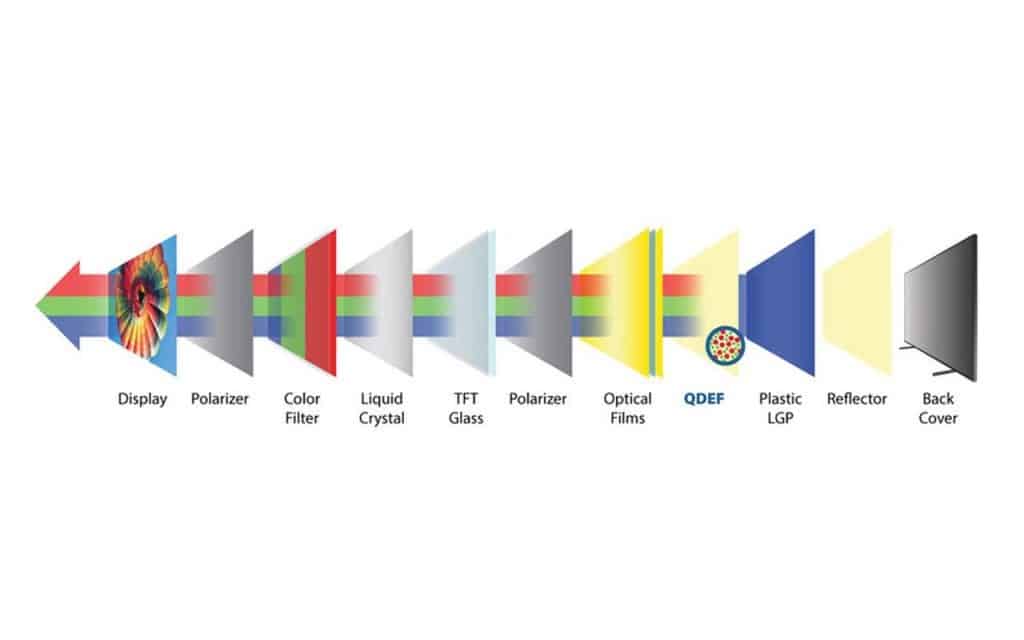
What QLED did was introduce an extra layer to the mix: the quantum dot enhanced film that provides a much more refined image, better color vibrancy, better viewing angles, etc.
Advantages of QLED over other technologies
It’s clear that QLED outperforms your regular LED TV. The quantum dot layer significantly increases the picture quality and, if you were to put a LED and QLED TV side-by-side, the difference would be instantly apparent.
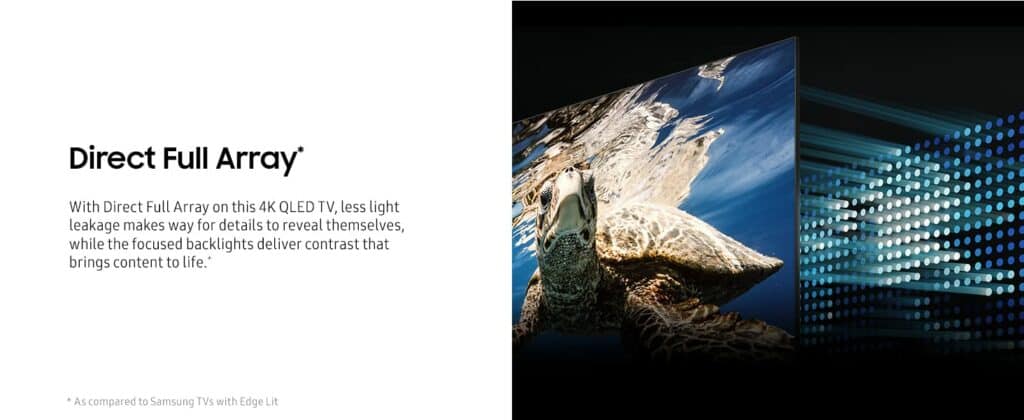
QLED provides a deeper black range, better contrast, more refined colors, better viewing angles, and better brightness than a regular LED TV.
Some of these advantages hold true for QLED vs NanoCell as well. Compared to NanoCell, QLED offers deeper blacks and a better contrast ratio and better brightness.
Disadvantages of QLED compared to other technologies
QLED is known for its sub-par viewing angles. Its VA (Vertically Aligned) panels may provide excellent brightness and vibrant colors. Still, the people that get the worst seats at your movie night will likely experience color bleeding and similar issues.
In terms of price, QLED TVs compete with LG’s OLED technology but fall short in many specs. When comparing OLED vs QLED, you’ll find that OLED offers better contrast, color separation, much more refined black levels, and is more power-efficient.
What is NanoCell technology?
Unofficially, NanoCell technology is a response to Samsung’s QLED brand.
Here’s why: LG Display, the sole manufacturer of NanoCell displays, is known for its advancements with OLED panels that keep pushing the limit of what’s possible in today’s TV space. However, OLED TVs are expensive, even when compared to QLED.
What this meant for LG commercially is that QLED was highly competitive in the mid to high price range. At the same time, OLED was generally considered a high-end product reserved for passionate cinephiles.
LG then introduced NanoCell, a panel technology that uses an LCD backlight enhanced with a filter layer – much like QLED.
How does it work?
Unlike Samsung, LG hasn’t published extensive documentation on exactly how their NanoCell technology works.
However, we do know roughly how it works. Like QLED, NanoCell uses a filter layer positioned in front of the LED backlight to improve color depth. This filter layer is made up of what LG calls “nanoparticles,” although it’s not exactly clear what these nanoparticles are.
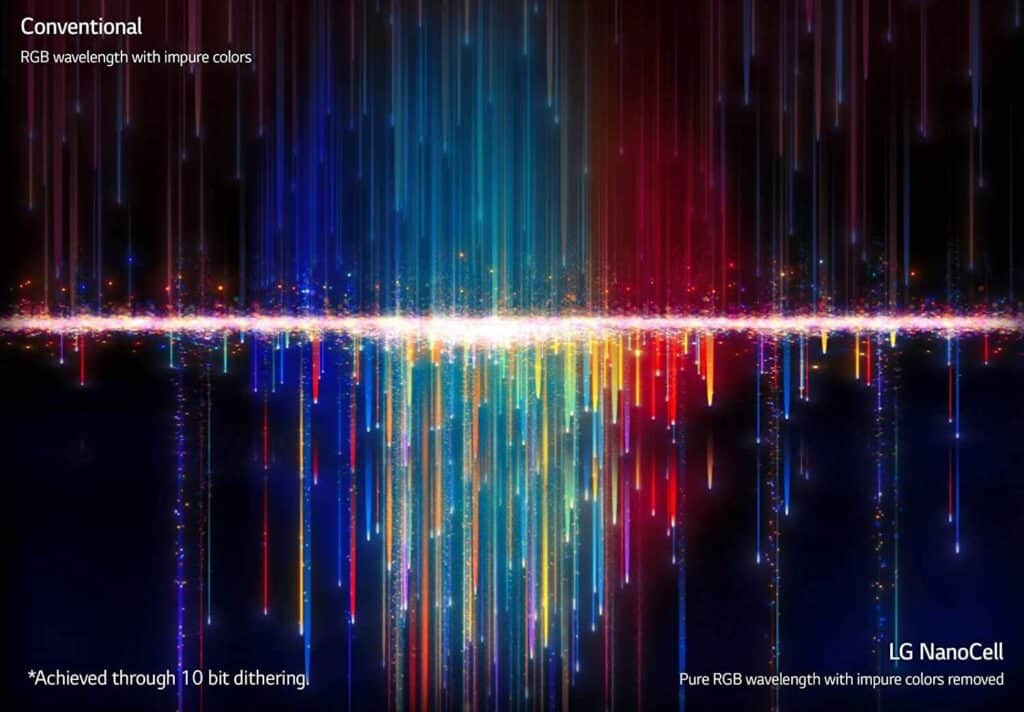
The consultancy firm Palomaki Consulting conducted a bit of a deep dive to answer this question. It concluded that NanoCell most likely uses a basic molecular dye that improves color.
Advantages of NanoCell over other technologies
Compared to QLED, NanoCell has much better viewing angles and is less bothered by sunlight reflections. Both of these advantages come from LG’s IPS (In-Plane Switching) panels that outperform Samsung’s VA panels in certain areas but fall short in others.
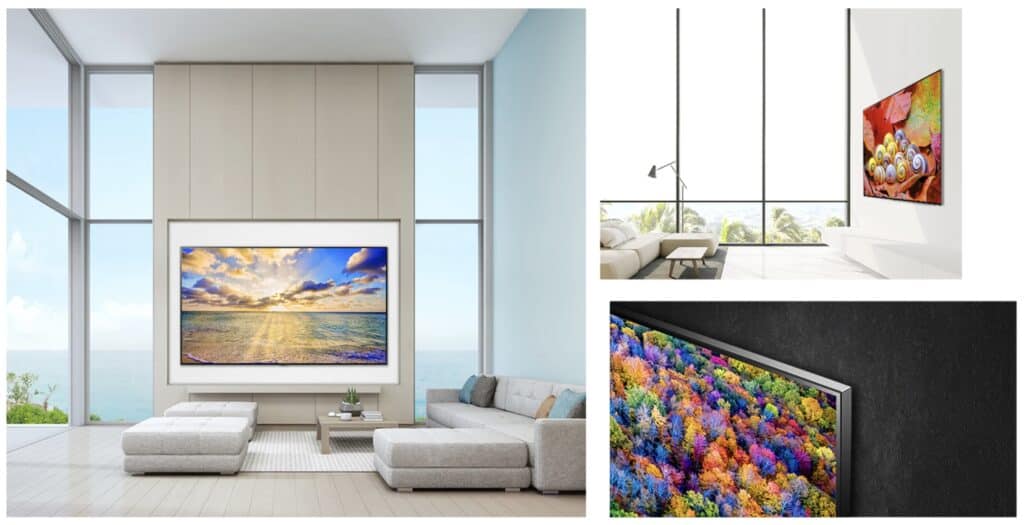
NanoCell technology is also superior to your regular LCD TV in pretty much all areas, including color separation, contrast, viewing angles, etc.
Disadvantages of NanoCell compared to other technologies
While they offer great viewing angles, NanoCell’s IPS panels struggle to produce a convincing black range. Especially in very dark rooms, NanoCell’s darkest black levels will look more like dark grey.
NanoCell also doesn’t offer as wide a contrast range as QLED. The brightest parts of a QLED screen will usually be at least 4,000 times brighter than the darkest ones. NanoCell maxes out at around 1,000.
The key differences and similarities between NanoCell and QLED
To summarize, both NanoCell and QLED use standard LED backlight technology, improved with a filter layer. The underlying technology behind the filter layer is different, but it ultimately achieves the same goals: better color vibrancy, wider viewing angles, and better contrast than regular LED.
Most differences between NanoCell and QLED come from their LED panel technologies – NanoCell uses IPS, while QLED uses VA.
This results in the following critical differences:
- NanoCell offers better viewing angles
- NanoCell is better at handling daylight reflections
- QLED offers better brightness and contrast
- QLED offers better black levels
| Comparison | QLED | NanoCell |
|---|---|---|
| Brand | Samsung | LG |
| Technology used | A quantum dot filter that enhances color performance | Unknown, most likely molecular dye that improves color filtering |
| Panel technology | VA (Vertical Alignment) | IPS (In-Plane Switching) |
| Viewing angle | More narrow, can appear discolored for viewers on the outside seating areas | Wider, less discoloration on the outside seating areas |
| Contrast and brightness | Higher contrast and brightness, contrast ratio over 4,000:1 | Lower contrast and brightness, contrast ratio under 2,000:1 |
| Black levels | Deep, more nuanced black range | Unconvincing black range with a slight grey tint |
| Perfect viewing conditions | Dark, dimmed rooms | Daylight |
| Product variety | Offers a wider range of products, also available from other manufacturers such as Hisense, TCL, and Vizio | Only offered by LG at the moment, lacking in options smaller than 49’’ |
| Price | Check Price on Amazon | Check Price on Amazon |
QLED vs NanoCell – The conclusion
Both of these technologies offer a big improvement over regular LED TVs and you’ll hardly go wrong with either one. If you’re switching from an older LED TV, you’ll see a massive improvement in pretty much all criteria, regardless of the option you choose.
That being said, it’s your money and you should be sure you’re making the right choice that delivers the experience you want. We hope our NanoCell vs QLED comparison has helped you make that choice.
QLED is the more advanced, more widely developed technology that offers better brightness, contrast, and a deeper black range.
The only thing that NanoCell as a technology has over QLED is better viewing angles and a marginally better performance in bright daylight conditions.
Ultimately, it will come down to comparing these two technologies on a model-by-model basis, especially since they both offer some impressive options in the high price range.
